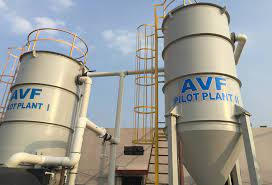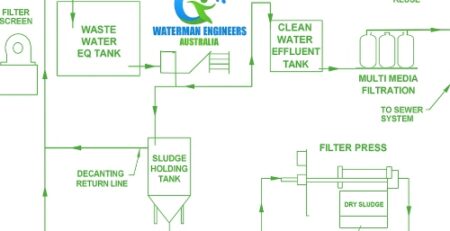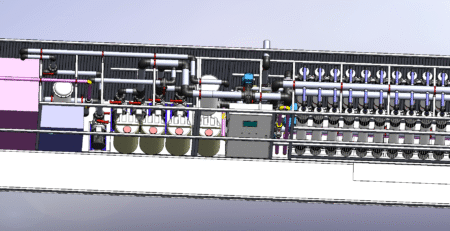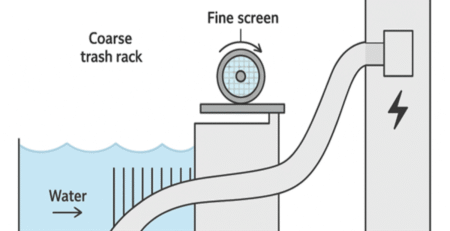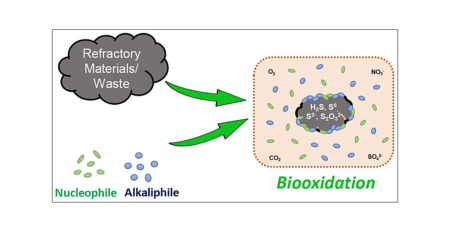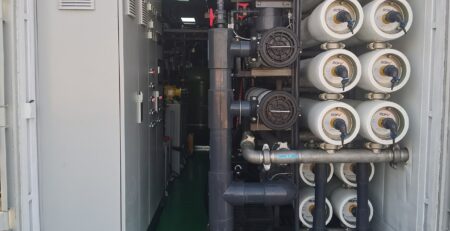Use of Artificial Intelligence for Water Treatment Plants
1. Introduction
Water is an essential resource for life, health, agriculture, and industry. As urbanization, industrialization, and climate change intensify, ensuring clean and safe water becomes increasingly complex. Traditional water treatment processes, while reliable, face challenges such as aging infrastructure, operational inefficiencies, increasing demand, and variable water quality. In response to these pressures, technological innovation has become a crucial enabler for sustainable water management.
Artificial Intelligence (AI) has emerged as a transformative force across various industries, including healthcare, finance, manufacturing, and energy. In recent years, AI’s application in environmental engineering and water treatment has gained momentum. The integration of AI in water treatment plants (WTPs) offers powerful tools for optimizing processes, reducing operational costs, ensuring compliance with regulations, and improving decision-making in real time.
This paper explores the multifaceted applications of artificial intelligence in water treatment plants. It delves into how AI technologies, such as machine learning, deep learning, and predictive analytics, are revolutionizing conventional treatment methodologies. It further examines real-world use cases, challenges in adoption, future opportunities, and the ethical considerations surrounding the deployment of intelligent systems in critical infrastructure.
2. Overview of Water Treatment Plants
Water treatment plants are facilities designed to remove physical, chemical, and biological contaminants from raw water sources—such as rivers, lakes, and groundwater—to produce potable water. The goal is to ensure the treated water meets health and safety standards suitable for human consumption and industrial use.
Typical Treatment Stages:
1. Coagulation and Flocculation: Adding chemicals to destabilize and aggregate suspended particles.
2. Sedimentation: Allowing flocs to settle at the bottom of a sedimentation basin.
3. Filtration: Removing remaining particles through sand, gravel, or membrane filters.
4. Disinfection: Killing or inactivating pathogens using chlorine, ozone, or UV radiation.
5. pH Adjustment and Chemical Balancing: Optimizing the water’s chemical properties before distribution.
Challenges Facing Water Treatment Plants:
– Aging Infrastructure: Many plants operate with outdated equipment.
– Operational Complexity: Balancing multiple variables and treatment goals.
– Variable Water Quality: Changes due to seasons, pollution, or upstream activities.
– Resource Constraints: Limited budgets and skilled labor.
– Regulatory Compliance: Adhering to stricter water quality standards.
3. Role of Artificial Intelligence in Modern Industry
AI refers to computer systems capable of performing tasks that typically require human intelligence, including learning, reasoning, problem-solving, and pattern recognition. Key subsets of AI relevant to water treatment include:
– Machine Learning (ML): Algorithms that learn patterns from historical data to make predictions or decisions.
– Deep Learning (DL): A specialized form of ML using neural networks to model complex relationships.
– Computer Vision: Using image analysis to monitor physical processes.
– Natural Language Processing (NLP): Interpreting textual data from reports or logs.
– Reinforcement Learning: Algorithms that learn optimal strategies through trial and error.
Industries leverage AI to enhance productivity, reduce costs, anticipate failures, and personalize services. In the context of water treatment, AI helps operators make data-driven decisions, minimize environmental impact, and manage resources more effectively.
4. Applications of AI in Water Treatment Plants
AI technologies are increasingly being applied across multiple stages of the water treatment process to enhance monitoring, control, and optimization. The most impactful applications include:
4.1 Predictive Maintenance:
AI models analyze equipment data (vibration, pressure, temperature) to predict failures in pumps, motors, and filters before they occur. This reduces unplanned downtime and extends asset life.
4.2 Process Optimization:
Machine learning algorithms optimize the dosing of chemicals (e.g., coagulants, disinfectants) in real-time based on influent quality and operational conditions. This reduces chemical use and operational cost.
4.3 Water Quality Prediction:
AI models can forecast water quality parameters like turbidity, pH, and biological oxygen demand (BOD) using historical data, weather patterns, and upstream activities.
4.4 Leak Detection and Network Optimization:
AI algorithms analyze pressure and flow data to detect leaks in distribution systems and optimize pump schedules to reduce energy consumption.
4.5 Anomaly Detection:
AI-powered systems monitor data streams from sensors to detect anomalies that could indicate contamination, equipment malfunction, or cyber-intrusion.
4.6 Energy Efficiency:
Reinforcement learning algorithms identify strategies to minimize energy use while maintaining water quality by adjusting treatment schedules and pump operations.
4.7 Decision Support Systems:
AI-driven dashboards provide plant managers with real-time insights and recommend actionable decisions to respond to process variations and emergencies.
5. Case Studies and Examples
Numerous utilities around the world have adopted AI to improve their water treatment operations:
Integrate real-time monitoring and AI analytics for hundreds of water facilities globally. This has resulted in improved compliance and cost savings, and AI models have been used for demand forecasting, leakage detection, and pump scheduling. This has significantly increased operational efficiency and reduced water losses. The water utility implemented machine learning to forecast combined sewer overflows, enabling timely mitigation and reducing environmental impact. Municipalities, water boards, councils, and cities are integrating AI-based supervisory control and data acquisition (SCADA) systems in water treatment and distribution, enabling proactive responses to contamination and leakages.
AI provides AI-as-a-service for utilities, enabling even smaller municipalities to access predictive analytics and smart water insights.
6. Challenges and Limitations
Despite its promise, the adoption of AI in water treatment faces several challenges:
6.1 Data Quality and Availability:
AI models require large volumes of high-quality, labeled data, which may be lacking in older or rural treatment plants.
6.2 Integration with Legacy Systems:
Many water utilities still operate legacy SCADA systems that are not compatible with modern AI platforms.
6.3 Skills Gap:
Utility operators may lack the technical expertise to implement, maintain, and interpret AI solutions.
6.4 Cost of Implementation:
Upfront costs for sensors, computing infrastructure, and software licenses can be high, particularly for small utilities.
6.5 Trust and Transparency:
AI models, especially deep learning, are often viewed as “black boxes,” making it difficult for regulators and operators to trust their decisions without explainability tools.
6.6 Cybersecurity Risks:
AI platforms increase the digital footprint of water infrastructure, creating new attack surfaces for cyber threats.
7. Future Prospects and Recommendations
The future of AI in water treatment is promising, driven by advancements in computing power, IoT integration, and regulatory pressures for sustainability and efficiency. Key trends and recommendations include:
7.1 Increased Automation:
Water treatment plants will see increased automation of routine tasks, allowing human operators to focus on strategic oversight and complex decision-making.
7.2 Digital Twins:
The use of AI-powered digital twins—virtual replicas of physical treatment systems—can simulate various scenarios and optimize design, operations, and maintenance schedules.
7.3 Edge AI:
Deploying AI models on edge devices (on-site) can reduce latency and dependence on cloud connectivity, enabling faster response to critical events.
7.4 Collaborative Platforms:
Development of open-source AI platforms for utilities to share models, data, and best practices can accelerate innovation, especially for smaller municipalities.
7.5 AI and Climate Resilience:
AI can help predict the impact of climate events (e.g., floods, droughts) on water systems and develop adaptive strategies for ensuring continued service delivery.
7.6 Human-AI Collaboration:
Rather than replacing human operators, AI should augment their capabilities. Training programs and user-friendly interfaces are crucial to empower workers.
7.7 Policy and Regulation:
Regulators should develop frameworks that encourage AI experimentation while ensuring safety, transparency, and fairness in AI-driven decisions.
8. Ethical and Regulatory Considerations
As AI becomes more integral to water infrastructure, ethical and regulatory considerations grow in importance:
8.1 Data Privacy:
Water utilities collect significant data from users and infrastructure. Protecting this data from misuse and breaches is essential.
8.2 Algorithmic Bias:
AI models trained on biased or incomplete data may make inequitable decisions, impacting vulnerable communities.
8.3 Accountability:
Clear accountability must be established for decisions made by AI systems, particularly in safety-critical contexts like water quality assurance.
8.4 Transparency and Explainability:
Efforts must be made to develop explainable AI systems that operators and regulators can understand and trust.
8.5 Regulatory Oversight:
Governments and international bodies should develop standards and certification processes to validate the safety and performance of AI systems in water treatment.
9. Conclusion
Artificial intelligence holds transformative potential for water treatment plants, offering unprecedented capabilities in monitoring, optimization, and decision-making. From predictive maintenance and process optimization to real-time water quality monitoring and leak detection, AI empowers utilities to meet the growing challenges of sustainability, efficiency, and resilience.
While significant challenges remain—such as data limitations, skills gaps, and integration with legacy systems—ongoing technological advancements, supportive policies, and cross-sector collaboration will likely overcome these hurdles. Ultimately, the synergy between human expertise and artificial intelligence can usher in a new era of smart water management, ensuring safe and reliable water for all.
Please contact us for any kind of Artificial Intelligence hardware, software, data analysis, and compilations



